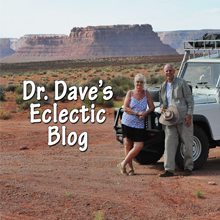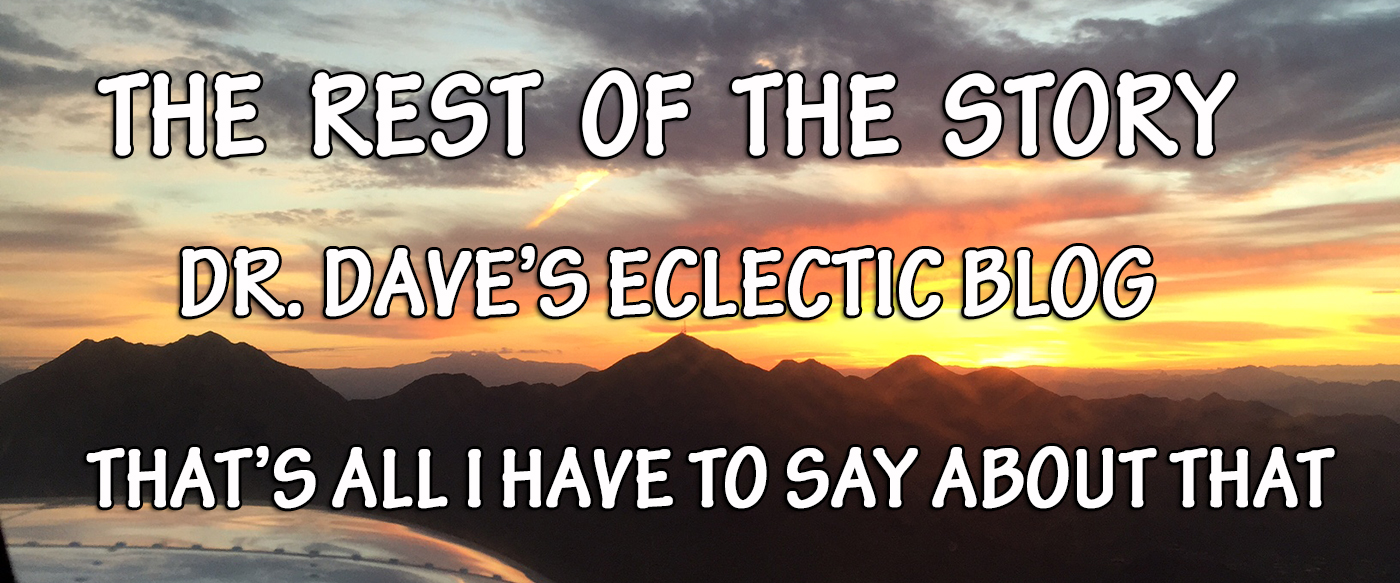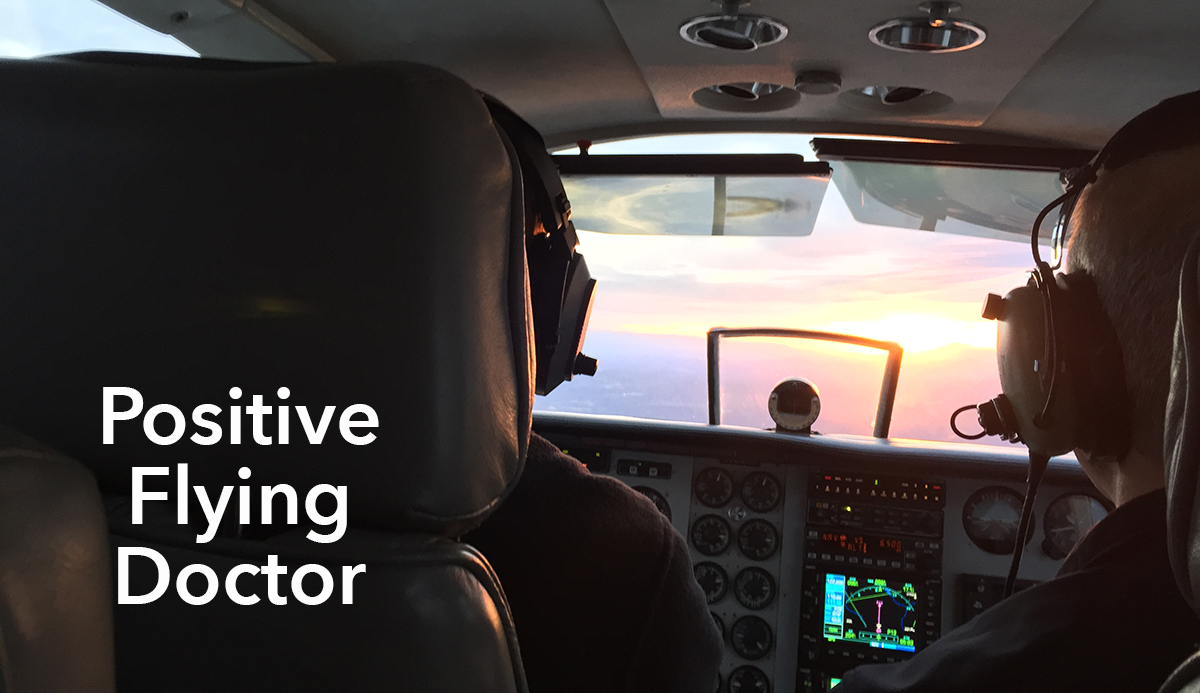
David J. Abbott M.D. is the Positive Flying Doctor. He spent his career working as an eye surgeon in developing countries. After twenty-eight years of medical practice overseas, he became a Flying Doctor with the Indian Health Service working with more than twenty different tribes in the American southwest.
Dr. Dave flew out to Indian reservations treating the Whiteriver Apache, San Carlos Apache, Hopi, Hualapai, Havasupai, and Colorado River Tribes.
Dr. Dave is the Encourager In Chief of the Positive Thinking Network. He is fully committed to make a positive difference in the world one person at a time. Dr. Dave also created The Positive Channel which is your source for all things positive on the World Wide Web.
Dr. Dave publishes two positive newsletters each week. Everyone could use a little encouragement. This is your big chance to get free positive emails from the Encourager in Chief. Don't miss this opportunity to make your life better!
Check out "Dr. Dave's Eclectic Blog" and discover a different way of looking at the world. Click here to SUBSCRIBE NOW to Dr. Dave's blog.
King Air 200 - Beechcraft King Air is an awesome way to commute to work. Imagine flying out to the reservation in a turboprop that flies at 4 miles per minute. The Royal Flying Doctors of Australia also use King Airs. The Not-So-Royal Flying Doctors of the Indian Health Service fly in King Airs when we need to move lots of medical personnel to the field for work in linked flights in the Phoenix Service Area (Hopi, San Carlos Apache, Whiteriver Apache).
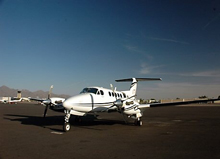
Baron - The Beechcraft Baron is the workhorse that gets us out to the field when there are only a few medical personnel on the flight. This twin-engine piston aircraft is not a greyhound, but it gets you to the field eventually. You just have to leave a little bit earlier in the morning to get to your clinics on time.
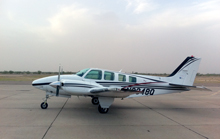
Helicopter - Dr. Dave flew in a helicopter to the village of Supai in the Grand Canyon to treat the Havasupai. The helicopter flight is only ten minutes long. If you decide to ride a horse into the canyon, it takes a couple of hours. The hike to Supai is eight miles long, and doctors who want to get exercise can walk to work.
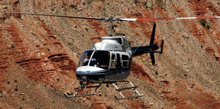
I'm sure I can land this plane. How hard can it really be? Dr. Dave is not a pilot, but he sits in the copilot seat watching everything that happens. There's lots of stuff happening in the cockpit, and after landing a bazillion times, I am pretty sure I can land these planes. After all, this job is supposed to be an adventure. Lower the flaps, deploy the land gear, go to full pitch on the propellers, and pull back on throttle. Everybody pray!
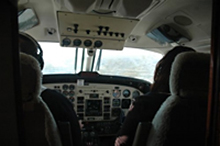
What's it like to be a flying doctor? Most of the time it's interesting and rarely terrifying. The runway at Whiteriver Apache reservation has a canyon at both ends which means you need to get your landing and takeoffs right the first time. Landing in a canyon is bad form. Thunderstorms in the monsoon get your attention, and snowstorms in the winter are a worry. Watching a plane ice up with ice going across the windshield and build up on the wings at 8000 feet is always a memorable experience.
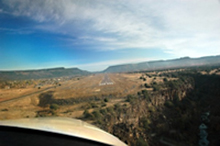
Being a flying doctor is more than a job. Sometimes it's an adventure. In this video you can see what it's like to be flying in a twin engine Beechcraft Baron as we encounter a haboob in Arizona. Flying in sandstorms is risky with lots of turbulence and reduced visibility. Fortunately we made it through without a problem. Such is the life of a flying doctor in the American Southwest.
Flying Doctors in the Indian Health Service get up at 5:30 in the morning and hustle to the airport to fly out to the Indian Reservations. Taking off in the dark has one great benefit. You get to see the sun rise over the eastern horizon as you fly to the White Mountain Apache and San Carlos Apache reservations. A majestic sunrise over Four Peaks mountains is an awesome reward.
Flying home in the afternoon after completing my work at the San Carlos Apache Reservation. Looking down I can see the palisades coming off Four Peaks mountain along the edge of Apache Lake. We are flying over the Apache Trail.
This is a picture perfect landing at Fort Apache on the White Mountain Apache Reservation. We are flying in a King Air 200. There is a deep canyon at both ends of the runway, and you don't want to make a mistake when landing or taking off. Fortunately the runway is long, and unless there is a mechanical issue with the plane or bad weather, there is not much risk of ending up in the canyon.
Dr. Dave's Eclectic Blog - Subscribe Today!
For ten years, my day job was working as a physician in the Indian Health Service, and my night job was working as a writer, podcaster, and web designer for the Positive Thinking Network. I wrote hundreds of articles that you can now read on Dr. Dave's Eclectic Blog. The blog covers a wide range of subjects focusing on what I have learned so far in seven decades on planet earth. Subscribe to my blog today. You will not be bored or disappointed.
Working as a flying doctor for ten years in the Indian Health Service was an uncommon privilege.
When I began my work, I did not realize there are more than 400 Native American tribes in the United States.
The Phoenix Service Unit was responsible for providing health care to least twenty-three of those tribes in Arizona, New Mexico, California, Utah, and Nevada.
Working with members of those tribes placed names and faces on anonymous people who were lumped together as Native Americans.
The Navajos are completely different from their neighbors, the Apache and Hopi. The Havasupai live in a world apart from the mainstream deep in the recesses of the Grand Canyon. The puebloan cultures reach back thousands of years into Chaco Canyon and into the present in the pueblos of New Mexico.
Each tribe has different traditions, and medical practice has to honor those traditions for it to be effective.
I have personally treated and become friends with thousands of Native Americans. I have found them to be warm, accomodating, and proud people. Their aspirations for themselves, their families and their tribes rival the best aspirations found anywhere in America. Although they are victims of centuries of opression, they have prevailed, and I am honored to have had the opportunity to serve them.
Positive Thoughts From The Positive Flying Doctor
The Positive Channel
The best place to get your daily dose of positive thinking is The Positive Channel. Positive thoughts are just a click away. This is your opportunity to change the way you think and feel about who you are and what you can do with your life. If you want to change your life, you must first change the way you think. When you change the things you think about, the way you think about things changes. When you change the things you talk about, the way you talk about things changes. Your new life starts today when you start putting positive things into your mind.
Positive Flying Doctor
Dr. Dave is the Positive Flying Doctor and the Encourager In Chief of the Positive Thinking Network. His blog tells what he has learned in the first seven decades of his life - the rest of the story! That's all I have to say about that!






